100th Anniversary Great Nave Tour at the Cathedral of St. John the Divine
Celebrate the 1925 construction of the stunning nave inside the world's largest Gothic cathedral!


Most days these gates are locked, passersby can only look through the railings at the gravestones – and at the pigeons basking in peaceful security. Twice a year open days are held but now neighbors are being granted more access. Once a month during the summer, visitors are invited to use the cemetery as a green space. Locals can sit and enjoy the tended lawn, the shade of ancient trees and maybe a spicy slice of oral history from one of the Trustees.
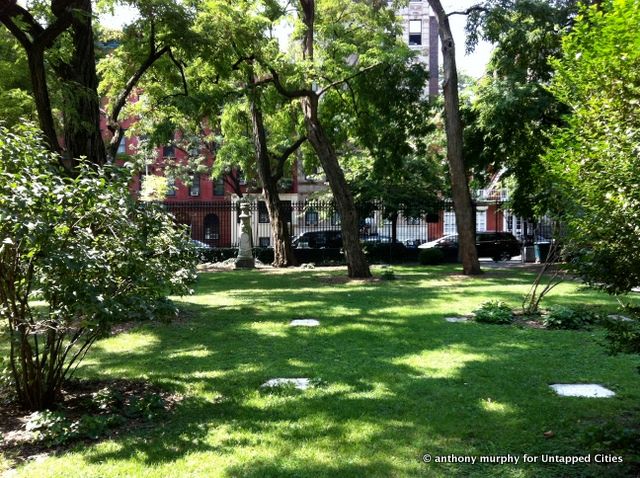
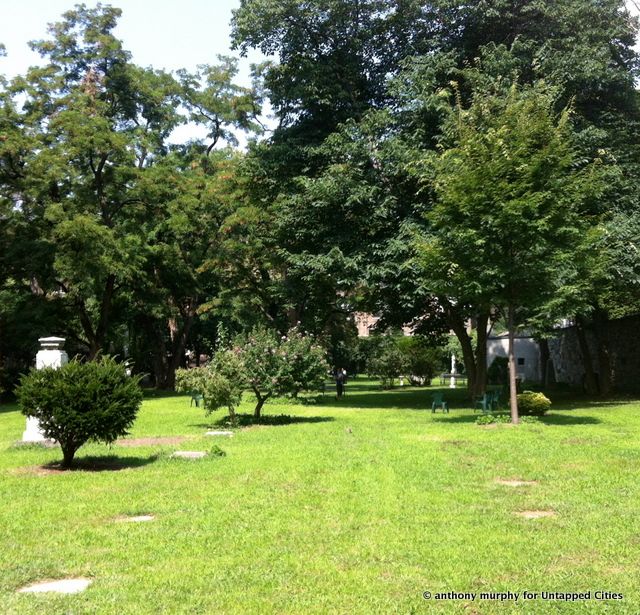
There are estimated to be over four thousand bodies beneath your feet. Each vault has a square stone marker which can be lifted open to provide entry, but only for the authorized few. Ladders are used to descend into the marble lined crypts. Marble was used in the belief that it stopped the spread of disease – thousands of New Yorkers died from yellow fever outbreaks and cholera epidemics in the 19th century, whilst germ theories were still developing.
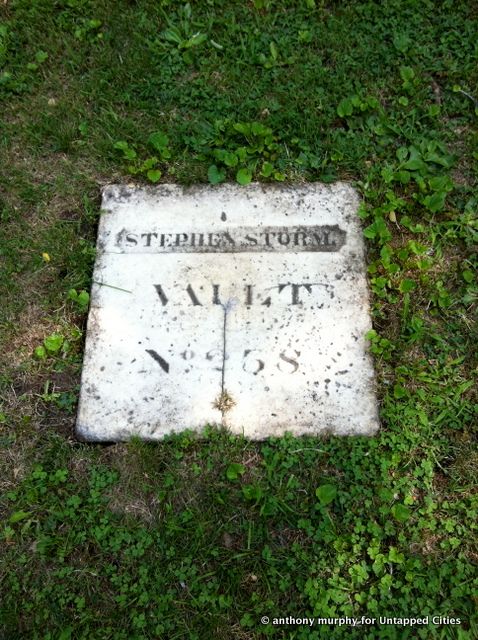
The cemetery is situated on East 2nd Street between 1st and 2nd Avenues, way down in what is now the East Village. Back in 1831 this area of Manhattan was only just developing and the cemetery was seen as a valid proposition to inter the rich, away from the populated parts of the city and away from affiliation to any church.
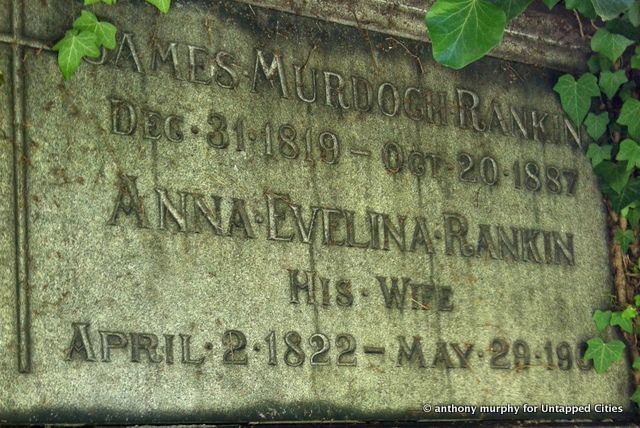
Many Old New York families paid for plots here. Names on monuments recall Manhattan’s original Dutch settlers and farmers, but also those colonists who oversaw the birth of a new country. There are landowners, revolutionary heroes and United States politicians sharing space.
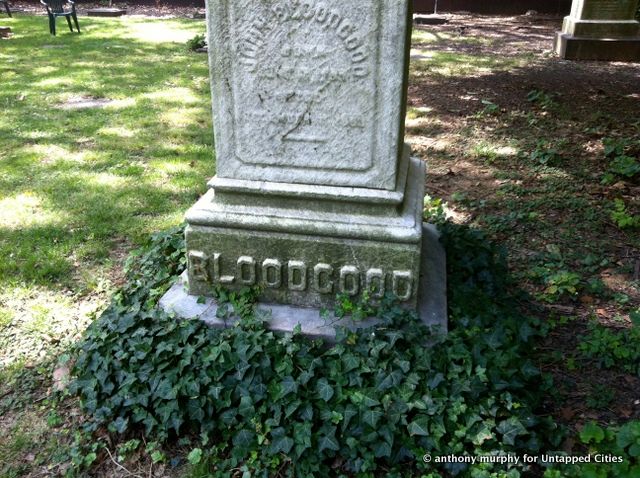
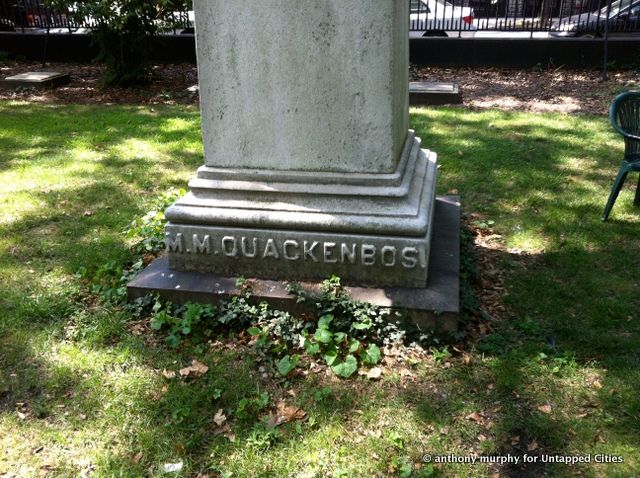
Founding Father and 5th U.S. President, James Monroe was interred here for a few years before being removed to his native Virginia. Removals and burials still take place occasionally as plots are kept active by the ancestors of the original purchasers.
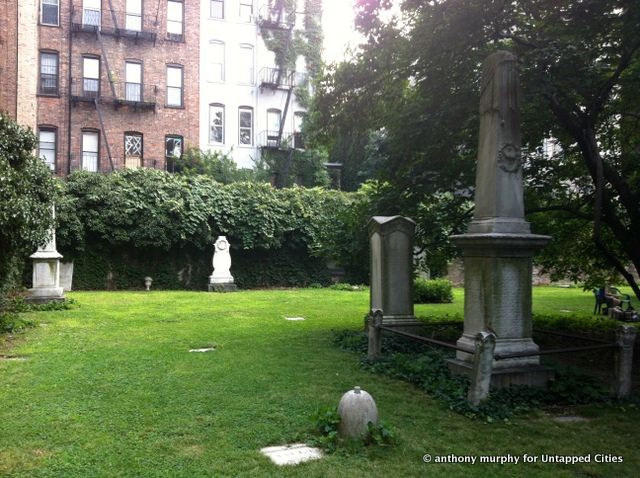
In more recent decades this space was treated as a dumping ground but since its recognition as a historic landmark, volunteers and the board of trustees have controlled its upkeep. Aside from the unusual cache found in 2010, the worst thing the greenkeepers have to deal with now is the occasional hawk-plucked pigeon carcass.
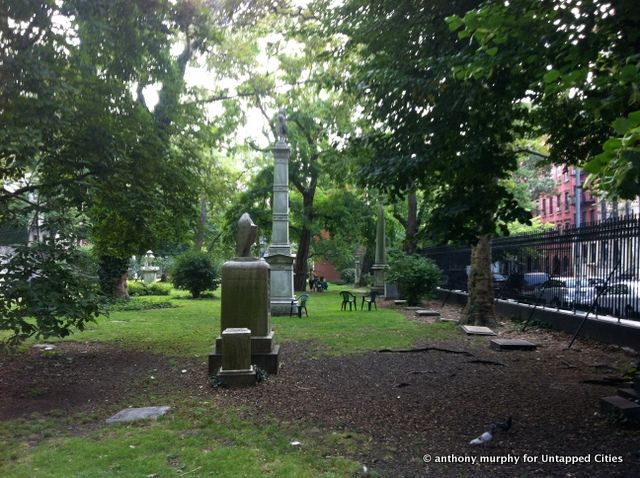
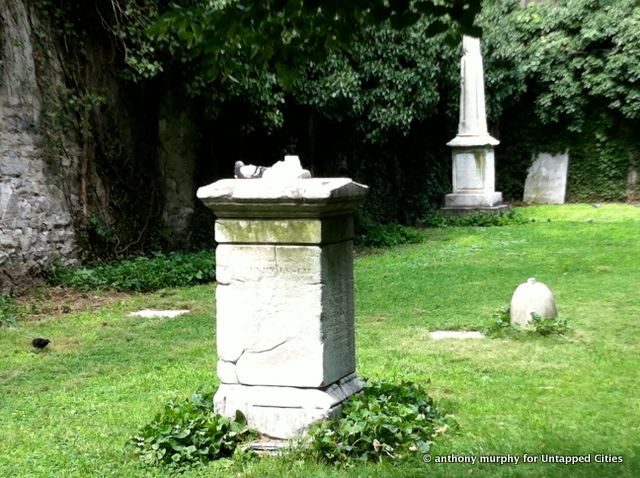
There is a lot of history in these feathered nests, some of the internees names alone are a stimulus to research – Balthazar Andronicus Chesebrough; Seabury Conover; Axel Adolphus Smedburg; Mangle Minthorne Quackenbos; Preserved Fish.
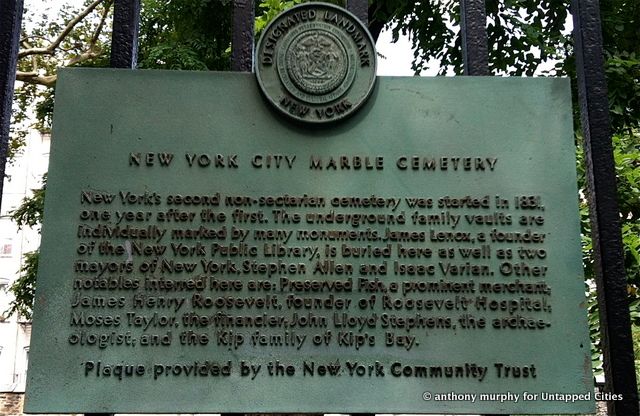
New York City Marble Cemetery is taking part in the city’s Open House weekend, October 6th and 7th. There will be talks and demos so you can find out more about the cemetery, its place in New York’s history, and more about some of the city’s original movers and shakers that rest here – in peace.
Subscribe to our newsletter